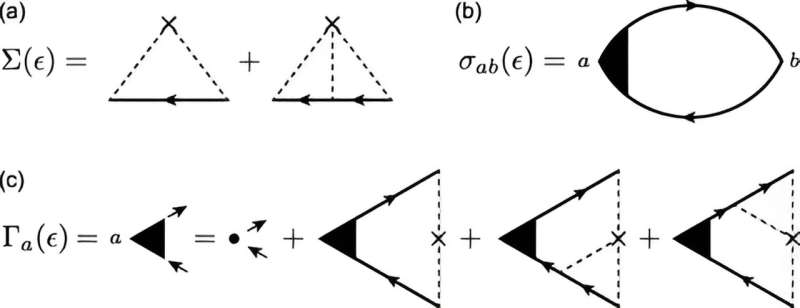This article has been reviewed according to Science X's editorial process and policies. Editors have highlighted the following attributes while ensuring the content's credibility:
fact-checked
peer-reviewed publication
trusted source
proofread
Quantum question about the anomalous Hall effect answered

A mysterious magnetic effect that causes the path that electrons take through a material to bend—called the anomalous Hall effect—has been elucidated in a new mathematical analysis by two RIKEN physicists. Their work has been published in the journal Physical Review B.
First discovered nearly a century and a half ago by American physicist Edwin Hall, the conventional Hall effect is a well-understood electrical and magnetic phenomenon. When just an electric field is applied to a conducting material, the electrons will move in a straight line that is parallel to that field. But when a magnetic field is added too, it causes the electrons' path to curve.
The anomalous Hall effect is a related phenomenon that happens in some magnetic materials. In this case, no external magnetic field needs to be applied since the material supplies the magnetic field.
But the cause of the anomalous Hall effect seems to vary between materials. "The difficulty is that there are many possible mechanisms but no unifying explanation," says Hiroki Isobe of the RIKEN Center for Emergent Matter Science, who co-authored the analysis with RIKEN colleague Naoto Nagaosa. "This makes it very complicated, even for specialists."
More information: Hiroki Isobe et al, Anomalous Hall effect from a non-Hermitian viewpoint, Physical Review B (2023). DOI: 10.1103/PhysRevB.107.L201116
Journal information: Physical Review B
Provided by RIKEN




















